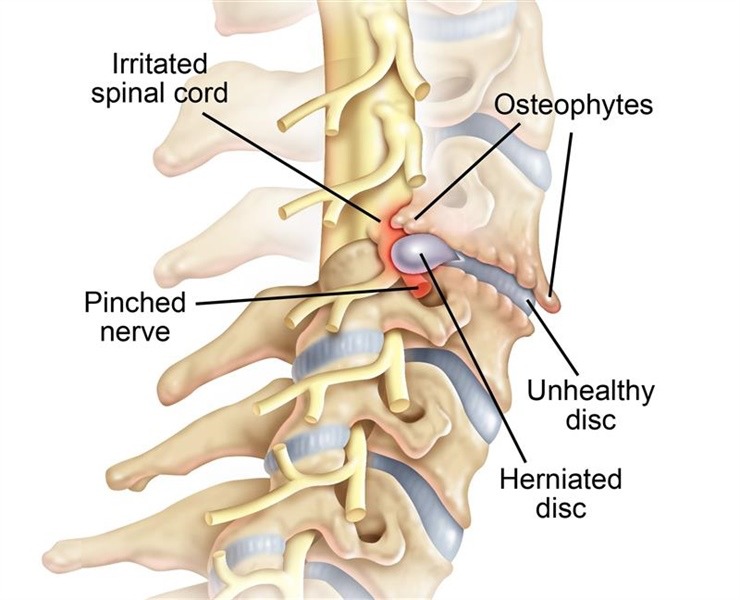 Book Appointment
Book Appointment
 +91 77740 40002
+91 77740 40002

Have you even experienced shooting pain in the arm starting from your neck? Do you experience tingling and numbness in your arm or some weakness in your arm muscles. Chances are that you have Cervical disc herniation or Slip disc in the neck leading to typical manifestation of cervical radiculopathy.
The function of the nerves which travel through the neck is to give sensation to the specific areas of the arm and also to give power to the muscles in the upper limb. Hence irritation of the nerves due to Cervical disc herniation leads to shooting pain in the arm and may be accompanied with weakness in the arm. Typically the pain may be reduced when the patient holds his arm above the head. Patients also complain of pain in the neck which is aggravated by movement of the neck
Diagnosis is based on the typical clinical presentation. When you think you have symptoms related to cervical radiculopathy, it is best to visit a spine surgeon and get your self evaluated. Your doctor may advise you certain tests like X ray of the cervical spine and MRI of the Cervical Spine which will help to determine the exact nature of the problem.
X rays help to understand the bony anatomy of the neck and corelation of the bone with each other. Some patients may show a reduced disc space between the cervical vetebra on x ray.
MRI: This is one of the best investigation to diagnose cervical disc herniation. MRI can show the exact site and location of the cervical disc herniation and can also give an idea about how much pressure the herniated disc fragment is creating on the delicate nerves of cervical spine
Treatment of Cervical disc herniation:
Treatment can be broadly classified as non operative treatment or operative/ Surgical treatment. Most of the patients with cervical disc heriation can be treated with non operative or non surgical methods.
Rest: Your spine doctor may advise you a period of rest for upto 2 weeks. This helps to reduce the neck movements and thus reduce the inflammation around the nerves in the spine thereby givinf pain relief
Physiotherapy: Following a short period of rest, it is highly important that you keep you neck and spine muscles active so that your spine remains well supported. Also exercise has a beneficial effect to reduce pain by releasing the feel good chemicals called endorphins in the body
Medicines: Typical medicines used in cervical disc herniation are
All these medication should strictly be taken under medical supervision through a doctor’s prescription
Some patients who do not respond adequately to the above treatment can be benefitted from interventional pain management by these techniques
In this technique, a mixture of local anaesthetic and steroid is released near the compressed nerve in the spine. This can give pain relief while the inflammation and swelling around the nerve settles.
However, one should understand that these injections do not remove the pressure off the nerves or heal the herniated disc and there is a possibility that the pain may come back again. The duration of effect of these pain injections can not be predicted.
Surgery for Cervical disc herniation:
Surgical treatment for cervical is advised in following situtation
In this surgery, the herniated disc is removed and a Cage and plate is placed there to lock the motion in the damaged disc space. This is a very successful operation and gives great results
The damaged disc is removed and is replaced by an artifical disc which maintains the natural motion between the two bones. By this virtue the spine mobility remains intact. However, candidates for this surgery need to be carefully selected following proper guidelines